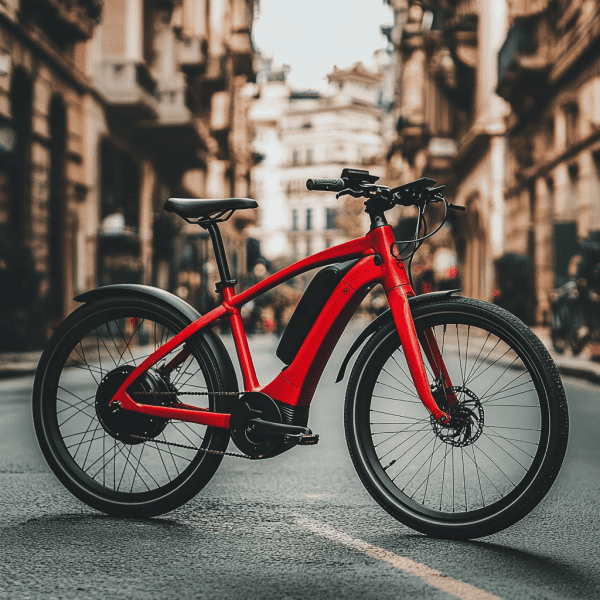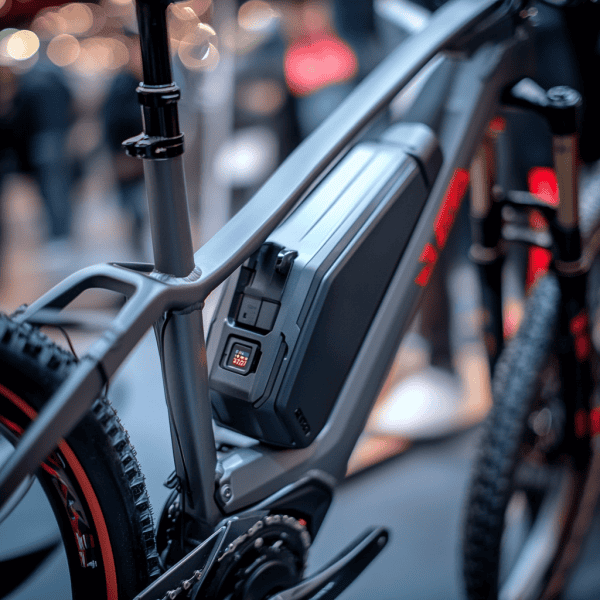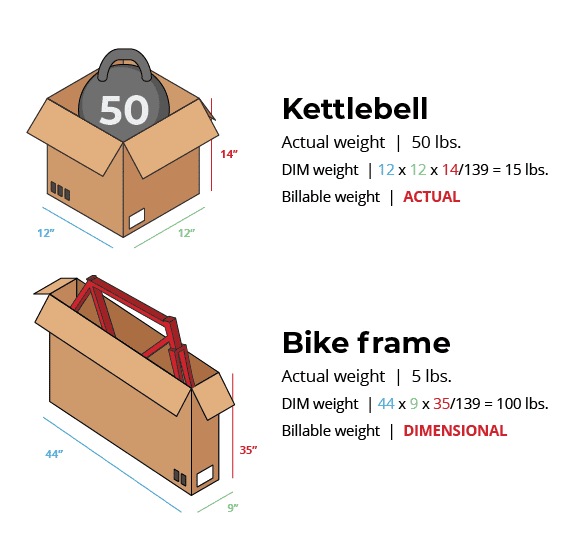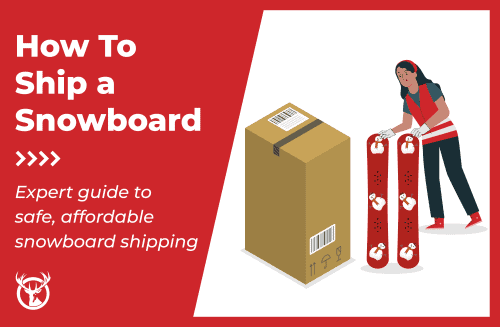Shipping electric bikes requires careful planning to handle hazardous batteries, prevent damage to bulky frames, and control escalating costs. Whether you’re selling a single bike online or running an ebike company, mastering these logistics challenges is crucial for a successful shipment.
It’s challenging, but don’t worry. We ship thousands of ebikes every month, so we know all the tips and tricks for safe ebike shipment.
In this comprehensive guide, we’ll explain exactly how to ship ebikes safely and cost-effectively, from battery regulations and packaging requirements to real carrier costs and strategies for reducing dimensional weight charges.

TL;DR:
Key takeaways

Assembled ebikes with built-in batteries classify as UN3171 (battery-powered vehicles), which may reduce hazmat fees compared to shipping batteries separately

Carriers often calculate ebike shipping costs using dimensional (DIM) weight. To reduce cost, optimize packaging size to avoid paying for unused space.

Lithium batteries require Class 9 hazmat labeling and proper documentation—noncompliance penalties can exceed $10,000.

UPS and FedEx only ship ebike batteries via ground services and charge additional hazardous material fees.

Do you run an ebike ecommerce company? Consider handing off your fulfillment to Red Stag Fulfillment. We ship thousands of ebikes and accessories every month for leading brands, and our deep carrier discounts and accuracy guarantees can save you money and let you stop worrying about the fulfillment side of your operation.
Learn more about our specialized ebike fulfillment services.
Basics of how to ship electric bikes
E-bike shipping is similar to standard bike shipping in that all bikes are considered large or heavy shipments. They require specific shipping tactics, like using a special e-bike shipping box and other packaging materials to move the size and weight.

Cost-efficient transportation demands strategic planning, too. Shipping an ebike takes up a lot of space. Even ebike models on the lighter side could limit the number of items a truck can carry. This may constrain the carrier’s profitability, so they use a different pricing structure, which we’ll discuss more below.
And, as with any product, speed and accuracy are vital. Customers expect two-day shipping or faster for most products, including electric bike delivery.
But when shipping an ebike that quickly, you may have a higher risk of damage. If clients ship e-bikes back due to damage, it can eat up profits quickly—and damage your brand reputation.
Working with an ebike shipper may help. An experienced 3PL or logistics partner can streamline packaging and may be able to offer cost efficiencies and guarantees.
Standard vs. ebike shipping differences
The difference between standard bike and e-bike shipping is that ebikes are powered by lithium batteries. This complicates shipping, because lithium metal batteries designed for ebikes may be classified as hazardous materials.
That means you have to comply with hazmat shipping regulations. There may also be additional requirements if a specific lithium-ion battery model has been recalled.
These regulations detail how to ship an ebike battery, and they are not optional. Penalties for noncompliance may spike into tens of thousands of dollars.
Other ebike shipping considerations
You may also have unique needs related to your specific ebike designs. Let’s take a look at how they may impact your supply chain and fulfillment.
How to ship ebike parts and products
Ebike shipping may be complex, depending on how you organize your supply chain.
- Some ebike companies assemble parts to produce ebikes.
Their shipping activity includes receiving parts and shipping products. - Others sell pre-assembled bikes they design with an overseas manufacturer.
Their shipping activities focus on products. - Some companies may also sell parts, including lithium batteries, to other sellers or to customers.
This shipping activity focuses on parts, but you may still ship products.
Why does this matter? It matters because parts and products may be treated differently under transportation regulations.
There’s a process called transformation that is exactly what it sounds like. The parts transform into products—your ebikes—but the point at which that happens in the supply change may change your shipping protocols.
Ebike assembly
Consider this supply chain: You assemble most of the parts to produce an ebike, but it makes more financial sense to do the final steps further downstream. Maybe you install a lithium metal battery or a front wheel at a fulfillment center before the ebike is delivered to a customer.
There are scenarios where this may help you reduce your compliance obligations, making your supply chain a little easier to manage.
To pull this off, you need a specialized ebike shipping partner who can assist with assembly, including batteries or other parts, and ensure you’re still following the rules.
Working with an ebike shipper
Partnering with an ebike shipper can help streamline your fulfillment and optimize landed costs. Here’s how.

Ebike shipping and fulfillment models
In addition to various manufacturing and assembly protocols, you may also have various fulfillment models.

Sell and ship direct-to-customer (DTC).

Sell and ship to a local bike shop or other retailers.

Sell on bike shop websites or other retailer sites and drop ship.

Some combination of the above.
It’s normal that most bike sales happen across multiple channels. So, you may sell on your own website and on marketplaces like Amazon. You may deploy creative tactics, like offering a mobile application to build community and including links to products.
It can become time-consuming to handle inventory management and order fulfillment across these channels. But a qualified 3PL or logistics partner has this expertise and can take these responsibilities off your plate.
Finding an electric bike shipping partner
With so many supply chain variables, it’s vital to work with a 3PL that is experienced in shipping electric bike batteries.

Ask about their industry experience and compliance, including hazmat certifications and other ongoing training and process optimization.

Inquire about perfect shipment metrics. In logistics, a perfect shipment is accurate, undamaged, and on time.

Ask about guarantees, especially around shipping errors and shrinkage. Calculate how their tolerances may impact your predictability and profitability.
We also created a guide to help you find the best 3PL for ecommerce, including unique needs for heavy, bulky items and other specializations. Bookmark it for quick access when you’re done with this article.
On top of the guide, we recommend you educate yourself on issues related to batteries. Let’s peel back some of the layers we’ve addressed so far.
Classifications to ship ebike battery products
Classification is the systematic categorization of parts or products based on certain criteria and attributes. Whether you fulfill orders in-house or work with a 3PL, it’s important to understand how classification impacts the shipping regulations for your product.
Various governing bodies—like the United Nations, the United States International Trade Commission (ITC), the International Air Transport Association (IATA), and the Department of Transportation (DOT)—assign classification codes for various purposes. Some of these purposes include trade, taxation, international transport, and domestic logistics.

Classifying lithium-ion batteries
Classification is a highly complex field of expertise. It requires experience to ensure accuracy. Even after reading this, you may find shipping considerations remain, including:

Codes may change as parts or products evolve. Update text is typically dense reading.

Codes contain highly granular details that may change which rules apply.

Untrained people may think a certain code obviously applies to a product.

The reality is a different code may be the correct fit, but you never realize.

The codes aren’t always organized to make them easy to compare.
This is why it’s important to work with a partner who can demonstrate deep industry expertise and experience when it comes to knowing how to ship e-bike batteries.
Classification codes for electric bike batteries
Now, let’s talk about how this applies to electric bike shipping.
Ebikes and lithium batteries fall under different classifications depending on their attributes. That’s because there are several possible descriptions for ebike batteries and battery-powered equipment.
These descriptions, or proper shipping names, are found in the Hazardous Materials Table (HMT) in § 172.101 of the Hazardous Materials Regulations (HMR).

Fully assembled ebikes with batteries in the frame are classified as UN3171 or battery-powered vehicle shipments.

A non-expert could easily make the mistake of assigning UN3481, which applies to lithium-ion batteries contained in equipment.

This is an example of a classification seeming to fit at first unless or until you learn there’s a more accurate classification.
Depending on your manufacturing process, classification may change as items make their way down the supply chain. For example, some lithium-ion batteries fall under UN3091 or UN3481. These are batteries packed with a package that contains equipment and cells or batteries that are not installed in the equipment.
But, once assembled, the parts, including the lithium-ion batteries, may be transformed into a product that qualifies as a battery-powered vehicle. At that stage, your ebike may be able to ship by truck or rail without hazmat fees.

NOTE: If you ship a spare battery separately, it might be UN3090 or UN3480, because they’re a stand-alone package containing only the cells and batteries with no equipment. This could mean how you ship spare batteries may vary from how you ship a bike with the battery installed.
International shipping of lithium-ion battery packs
Most ebike sellers rely on ocean vessels and trucking for transport, but in some cases, batteries may be shipped by air.
In these cases, the U.S. DOT governs transport of batteries by highway, but IATA governs transport of batteries by air. In addition to IATA regulations, many air carriers have supplemental policies and limitations on lithium-ion battery shipments.
For more on how to ship bike batteries internationally, you may want to reach out to your 3PL or your air carrier.
How to store and ship lithium battery packs
We’ve defined some of the classification information you need for e-bike shipments. Now, let’s look at what it entails when shipping electric bicycle battery packs for your models.
Class 9 hazardous material classification
US DOT classifies lithium batteries as Class 9 (miscellaneous) hazardous materials under 49 CFR, Parts 171-180 of the HMR.
That’s because lithium batteries present chemical and electrical hazards. Unlike standard alkaline batteries, they contain a flammable electrolyte and have high energy density.
They run the risk of overheating and igniting under certain conditions, and their fires are difficult to extinguish. In some cases, they create an effect called thermal runaway, which causes other batteries to catch fire, causing massive explosions. These explosions can be catastrophic and harm, maim, or kill people unexpectedly.
This is why a 3PL with experience in e-bike shipping is so crucial.
Electric bicycle battery storage
Your 3PL can handle lithium-ion battery storage for you, too. Storing bike batteries also comes with its own complexities and can be labor-intensive for ebike designers or manufacturers.
Here are some of the responsibilities of safe lithium battery storage:

Inspecting electric bike batteries during receiving before fully transferring possession

Checking the state of charge of rechargeable batteries to ensure it’s not too high

Segregating batteries to ensure they don’t place other inventory at risk

Checking and maintaining original packaging to ensure no tampering

Keeping batteries on special racks that eliminate the risks of stacked pallets

Maintaining and managing a continuously monitored fire detection system

Maintaining and managing a sprinkler or other appropriate firefighting equipment

Daily inspection of batteries, including thermographic scanning.

PRO TIP: As you can see, storing batteries for an electric bicycle creates additional hurdles. Outsourcing this task is often a well-advised consideration to make.
Labeling and recordkeeping
To ship e-bike battery types under Class 9 rules, you need to follow certain labeling protocols.
Specific labels or marks indicate packages contain lithium batteries and are designed to signal hazards to shippers along the supply chain.
Not complying with these labeling mandates carries serious penalties. Consequences may also include greater scrutiny of your packages moving forward, causing delays in your electric bike delivery. Some carriers may even put you on an exclusion list.
You’re also responsible for recordkeeping, which supports traceability if events warrant it. Turnaround times on record requests tend to be short, so it’s good to be prepared. Ultimately, you’re responsible for your lithium battery records, but this is another area where outsourcing can be helpful.
You can learn more about these requirements in the Code of Federal Regulations under 49 CFR Part 178.
How much does it cost to ship an e-bike?
Many e-bike clients want to know what shipping an e-bike costs. The answer varies because shipping costs depend on many factors:
- Product classification
In addition to the discussion above, carriers may include their own rules and fees based on e-bikes classification. - Actual weight vs. DIM weight
Carriers may apply different pricing structures for shipping e-bikes and other oversized packages. - Ebike shipping partners
Fulfillment partners that ship higher volumes may be able to help negotiate more favorable shipping costs for your e-bikes.
Let’s quickly look at available pricing to ship ebike batteries and then dive into other factors that may influence your shipping solutions.
UPS electric bike shipping
UPS ships e-bike batteries, including spare battery shipping, classifying them as dangerous goods. Ground shipment services may include an e-bike battery fee plus other fees. These costs can scale into the thousands and higher across your SKUs. Review this table for more detailed information, but call your UPS store to make sure everything in it is still accurate.
FedEx e-bike shipping
FedEx charges a hazardous material charge for qualifying items and may only ship e-bike parts or products via ground shipping options. They may also require a special dangerous goods certification on the label for UN 3171 e-bike battery shipments. They offer this e-bike battery shipping guide, which may change over time.
E-bike shipping by DIM weight
It’s crucial to understand how weight applies to e-bike shipping and the impact it has on your costs, so let’s get detailed.
What is dimensional weight?
Also known as volumetric weight or DIM weight, dimensional weight is a pricing technique used by shipping carriers to account for the space an item occupies in relation to its actual weight. This is particularly relevant for an electric bike shipment that may take up a significant amount of space in a truck despite how little it might actually weigh.

How do you calculate DIM weight for electric bike shipping?
DIM weight is calculated based on the volume of the package. The formula varies slightly among carriers, but it typically involves multiplying the package’s length, width, and height (in inches or centimeters) and then dividing the result by a dimensional factor. The dimensional factor is a constant determined by the carrier and is used to convert the volume into a weight equivalent.
Why is DIM weight used for ebike shipping?
The purpose of DIM weight pricing is to ensure fair pricing for shipping e-bikes and other large, lightweight items. Carriers want to account for the fact that an e-bike takes up valuable space in their vehicles, even though they don’t necessarily weigh that much.
Can I optimize DIM weight costs?
To determine the billable weight for e-bike shipping, carriers compare the DIM weight and the actual weight of the package and charge based on the higher of the two.
This encourages sellers to optimize their e-bike shipping box to remove wasted space and reduce costs.
You may avoid DIM weight charges when shipping with the right logistics partners. If your logistics partner can send enough volume to reach freight rates, you may be able to save money or lower additional fees related to shipping electric bike battery types.
Ebike shipping summary
E-bike demand may be high for many years as adoption and infrastructure increases.
The favorable market outlook may increase competition for your company. The industry may attract new investments from startup e-bike companies. Established brands may introduce new e-bike products or variants.
However, knowing how to ship e-bikes properly, like complying with battery regulations and optimizing for dim weight, can be challenging.
To navigate these issues effectively, a strong e-Bike 3PL fulfillment partner is essential.
Red Stag Fulfillment can provide your e-bike company with compliant warehousing, shipping expertise, and attentive customer service. Our guarantees help protect you from ebike shipping risks, allowing you to focus on meeting the demands of this dynamic product category.
Have questions or want to learn more? Reach out to get started.










